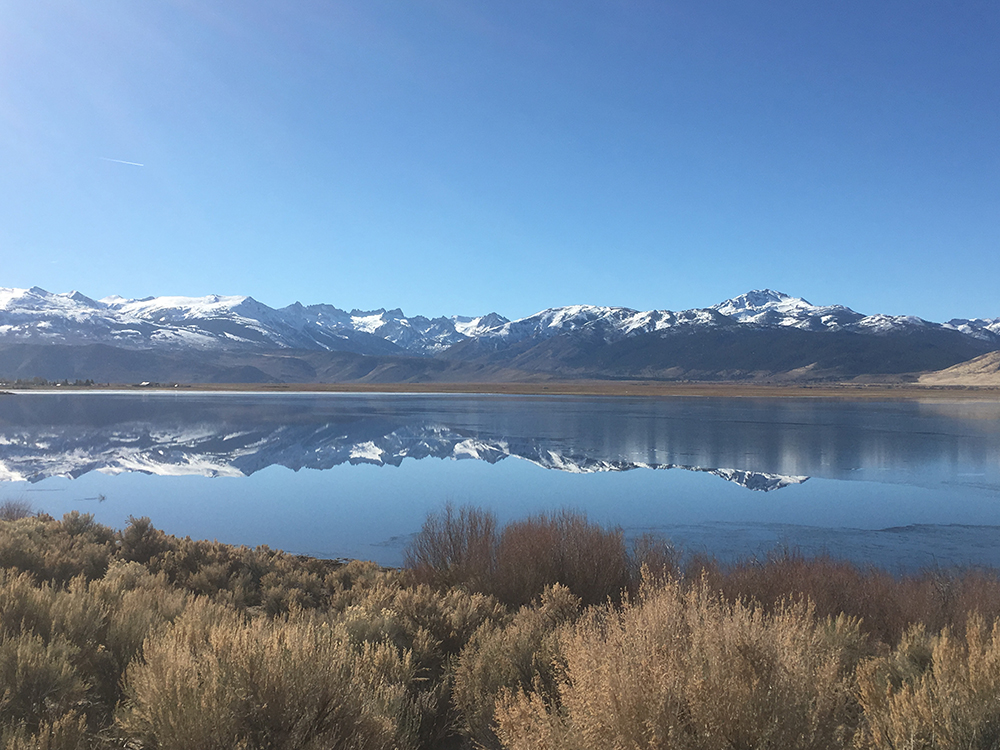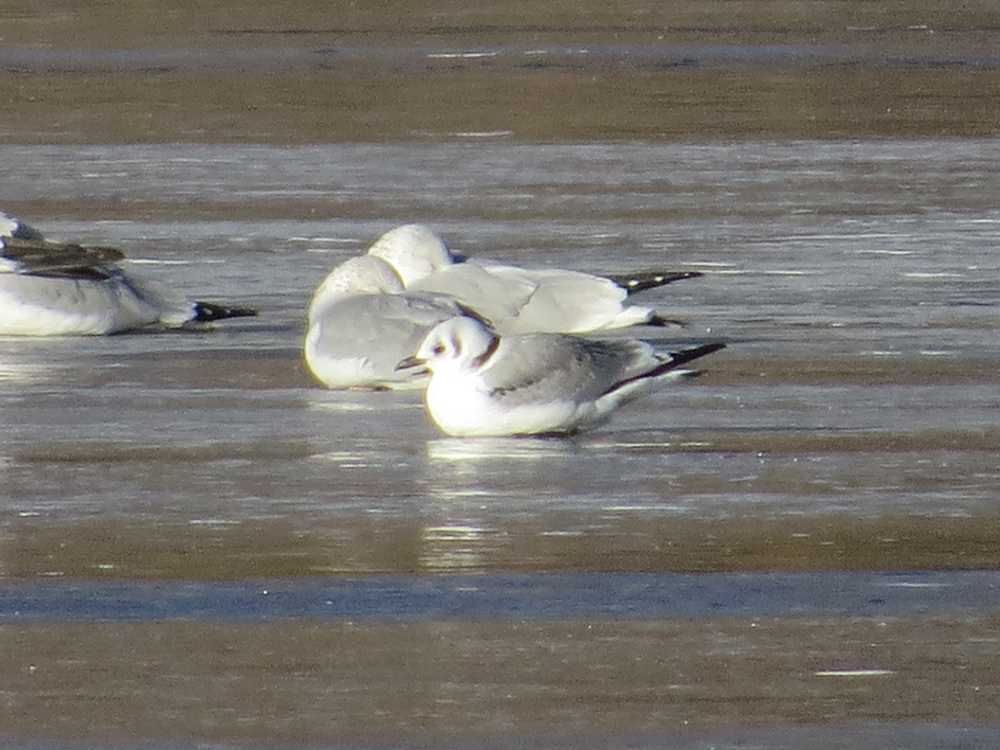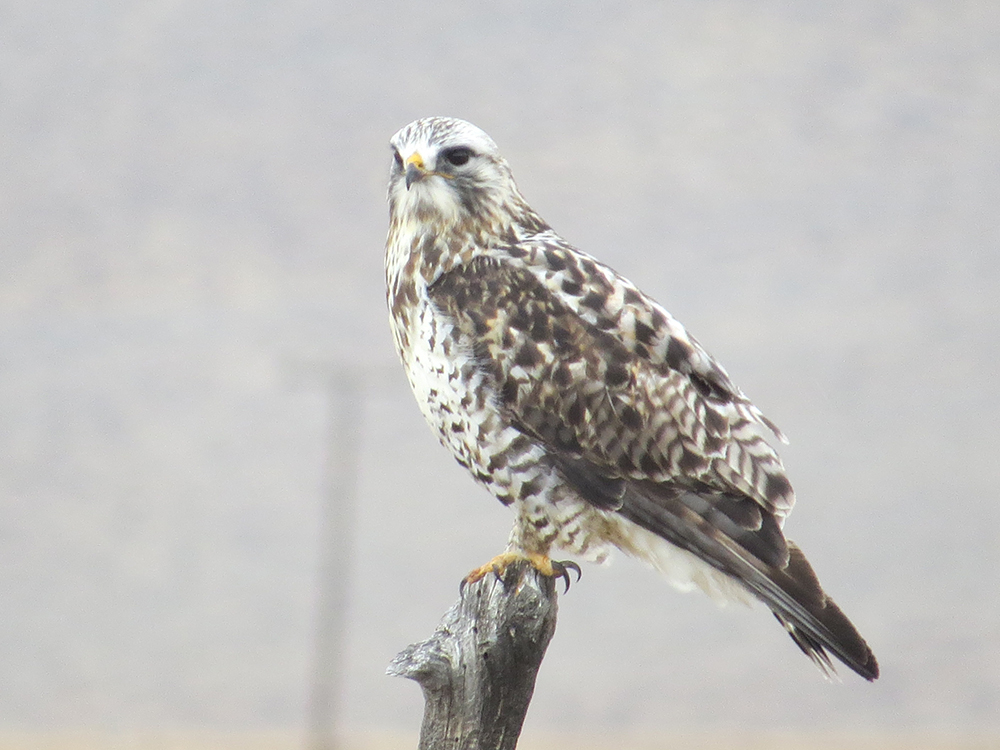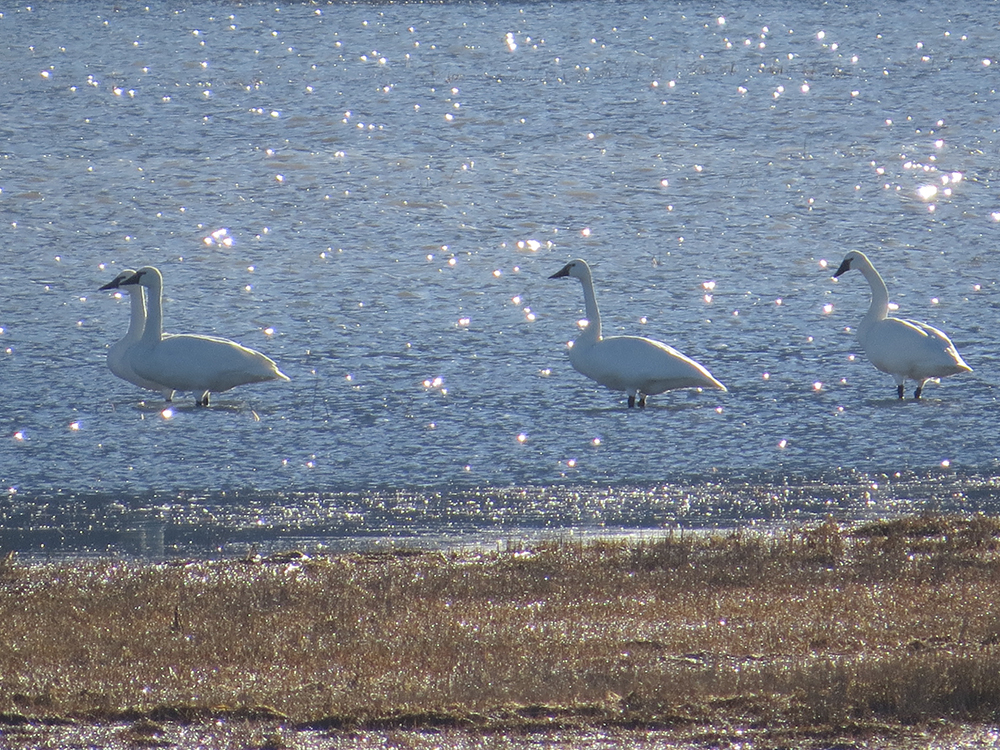
Just north of the Mono Basin lies a wide golden valley with a glittering half-frozen reservoir edged up against a pinyon pine forest. Winter is a fantastic time to look for birds in Bridgeport, and this winter in particular has drawn in some rare birds. The reservoir is packed with ducks like Redheads, Northern Shovelers, and Common Goldeneyes.

In December, the reservoir was just beginning to freeze over and the ice edge provided a perch for gulls to stand, or nap, without bobbing up in down in the cold water. A rare Black-legged Kittiwake spent almost two weeks flying laps around the reservoir with Bonaparte’s Gulls, snacking on small fish and napping in groups of Ring-billed Gulls. Kittiwakes breed in Alaska and spend their winters at sea, so this juvenile bird was a little confused and lost on this side of the mountains.

A female Barrow’s Goldeneye, another bird from typically more northern climes, has been spending time on the reservoir as well. This duck breeds in Alaska and western Canada, and sometimes makes it down as far south as Northern California during the winter. She mixed in with a flock of Common Goldeneyes, which created some great comparisons of the two species—female Barrow’s Goldeneyes have a blockier head with a steeper forehead, and a smaller entirely orange-yellow bill compared to the rounded head of the Common Goldeneye females, which have a larger bill with only a yellow tip.
Winter in Bridgeport is also all about raptors. Driving along the pastureland, you can see a Red-tailed Hawk on almost every telephone pole. This winter, Rough-legged Hawks seemed to be hunting in droves, with birders reporting high numbers along Twin Lakes Road, which winds through the dry fields. These birds spend their summers nesting on cliffs in the Arctic away from the human eye so it is always thrilling to see one soaring overhead or perched on a fence post in Mono County in the winter.

Though the birding might seem slow in the winter when compared to the summer breeding season, Mono County is truly a fantastic place to bird year round. Winter gives all levels of birders a chance to observe birds in a more focused way—less diversity means spending more time observing fewer species and perhaps seeing a behavior that is easy to overlook in the chaos of breeding season—and pay more attention to the migratory birds that are only around this time of year as well as the resident birds that live here year round.
If you want to visit Mono County to go birding in winter but don’t know where to start, contact me by email to set up a guided trip or visit our Guided Trips website for more information.

